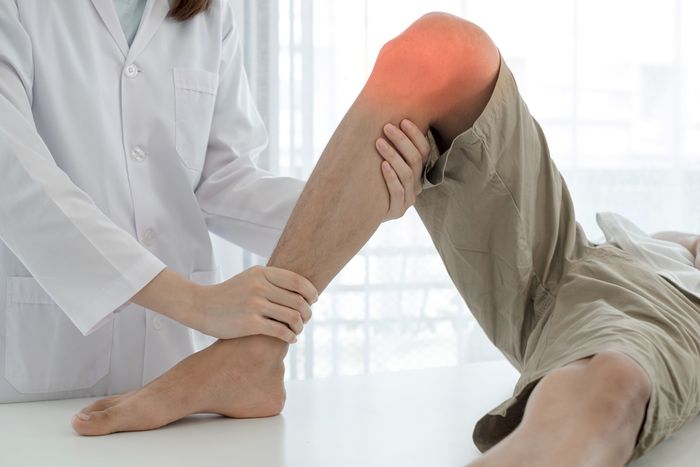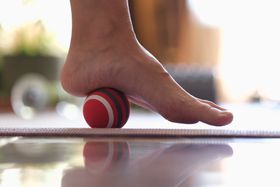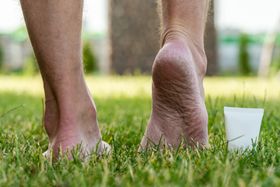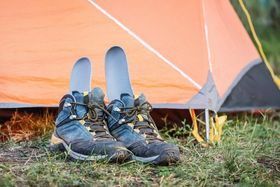Knee Pain When Squatting: Causes and How to Fix It
Published December 31, 2021.

Step after step, the leg carries the body from place to place. To perform this function, the hip, knee, and ankle joints work together to transmit the weight from the back and pelvis to the floor. The knee is the largest and most complex joint in the lower limb and plays a huge role in this arrangement.
Whenever the knee is affected by discomfort or pain, it immediately impacts the body's natural movement. This can be caused by different conditions and can occur in several positions of the knee.
This article looks at the different causes of sore knees after squatting as well as some home remedies and what you can do to prevent it from occurring.
Identifying the Position and Causes of the Knee Pain When Squatting
As earlier stated, pain, pressure, or discomfort in the knees when squatting can occur in different parts of the knee and for different reasons, such as the following:
- Inner knee pain This can result from an injury sustained while exercising or performing sports, such as a meniscal tear while running, by trauma to the knee, or from a medical condition like knee osteoarthritis.
- Posterior knee pain Pain behind the knee can be caused by Baker's cyst, arthritis, infection, injury, tumor, or deep vein thrombosis.
- Pain at the top of the knee This may be caused due to repetitive strain, overuse, quadriceps or hamstring tendonitis, patellar tendonitis, arthritis, and knee bursitis.
General knee pain may also occur due to compensatory mechanisms caused by weak hips or limited ankle mobility, poor or improperly fitted shoes, and incorrect techniques when exercising.
Home Remedies for Knee Pain Caused by Squatting
Proper Exercise Form
Using proper form and posture when squatting will help you to minimize knee pain. To perform a proper squat, follow the steps below:
- Stand shoulder-width apart with your knees in line with your heels.
- Take a deep breath.
- Bend your knees, going down as far as you can without allowing your bottom to drop below your knees.
- Return to your standing position by pushing from your heels instead of the balls of your feet.
In addition, reducing the range of motion during squatting can take some pressure off your knees and eliminate any possible pain. Research suggests that a mean hip range-of-motion (ROM) of 95.4 ±26.6° of flexion is needed to reach a maximal squat.
Low-Impact Exercises
Since knee pain while squatting can be due to loss of balance when carrying heavy weights, avoiding weights can help avoid pain. In their place, you can use resistance bands for strength training. Also, in place of squatting, consider low-impact aerobic exercises that do not have as much impact on the knee as squatting, such as swimming.
The RICE Method
Another home remedy for knee pain is the R.I.C.E method. You can relieve pain and combat inflammation with RICE—Rest, Ice, Compression, and Elevation:
- Rest Limit activities involving the knee to the barest minimum.
- Ice Applying an ice pack to the knee regularly can help minimize swelling and inflammation.
- Compression Wrapping the knee with an elastic bandage can also decrease swelling.
- Elevation Also ensure you keep the knee elevated at or above the level of your heart to decrease blood flow to the area and help prevent swelling.
Medically Assisted Treatment of Knee Pain
If the condition does not improve with home management, you can consider physical therapy. Upon examination of the knee, the physical therapist will design a holistic program to reduce inflammation, relieve pain, improve flexibility and mobility of the knee joints, and strengthen the muscles around the knee joints to prevent future episodes of pain.
Custom orthotics are also helpful in managing knee pain due to squatting. For example, when you use Upstep orthotics, beyond relieving pain, they aid proper alignment of the knee in the kinetic chain to provide support and restore balance and stability.
Surgical intervention can also be considered as a last resort when all conservative approaches have been exhausted with no improvement in the condition. Arthroscopy and knee replacement are two of the most common surgical interventions for knee pain.
Prevention and Rehabilitation of Knee Pain
It is best to never have had pain in the knee, which is why you should always take the necessary steps to achieve this, such as wearing proper footwear and ensuring you follow the correct form when exercising. However, once knee pain occurs, the goal of treatment is to relieve pain and avoid surgery since recovery from knee surgery usually takes a much longer time.
Orthotics for knee pain provided by Upstep can be of great assistance as a way to both prevent and rehabilitate future knee pain.









